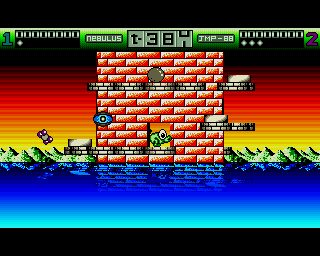-->
Details of classic games patches, where to download them, and how to install the latest updates for classic games. Download and apply the Retail patch (Windows Mac). If you have installed the Diablo II: Lord of Destruction expansion. Classic Environment Not Supported.
This guide will help you get started with installing and setting up the languages and tools you need to develop on Windows or Windows Subsystem for Linux.
Development paths
Apple Mac OS X El Capitan Free VIEW → OS X El Capitan features new options for managing windows, smarter Spotlight search, app enhancements, and faster performance. Download Windows 10 Disc Image (ISO File) Before updating, please refer to the Windows release information status for known issues to confirm your device is not impacted. The best ways to run Windows 10 on a Mac Two business-class virtualization tools, macOS’s own Windows partition feature, and two hobbyist-oriented tools give you plenty of options to. Our BitTorrent Web and Classic clients for Mac computers are available in one convenient location. Download the version that best suits you. The classic environment free download - Java Runtime Environment (JRE), Java Runtime Environment (JRE) (64-Bit), GTK+ 2 Runtime Environment, and many more programs.
Get started with NodeJS
Install NodeJS and get your development environment setup on Windows or Windows Subsystem for Linux.
Get started with Python
Install Python and get your development environment setup on Windows or Windows Subsystem for Linux.
Get started with Android
Install Android Studio, or choose a cross-platform solution like Xamarin, React, or Cordova, and get your development environment setup on Windows.
Get started with Windows Desktop
Get started building desktop apps for Windows 10 using UWP, Win32, WPF, Windows Forms, or updating and deploying existing desktop apps with MSIX and XAML Islands.
Get started with C++ and C
Get started with C++, C, and assembly to develop apps, services, and tools.
Get started with C#
Get started building apps using C# and .NET Core.
Get started with Docker Desktop for Windows
Create remote development containers with support from Visual Studio, VS Code, .NET, Windows Subsystem for Linux, or a variety of Azure services.
Get started with PowerShell
Get started with cross-platform task automation and configuration management using PowerShell, a command-line shell and scripting language.
Tools and platforms
Windows Subsystem for Linux
Use your favorite Linux distribution fully integrated with Windows (no more need for dual-boot).
Install WSL
Windows Terminal
Customize your terminal environment to work with multiple command line shells.
Install Terminal
Windows Package Manager
Use the winget.exe client, a comprehensive package manager, with your command line to install applications on Windows 10.
Install Windows Package Manager (public preview)
Windows PowerToys
Tune and streamline your Windows experience for greater productivity with this set of power user utilities.
Install PowerToys (public preview)
How To Download Windows 10 On Mac
VS Code
A lightweight source code editor with built-in support for JavaScript, TypeScript, Node.js, a rich ecosystem of extensions (C++, C#, Java, Python, PHP, Go) and runtimes (such as .NET and Unity).
Install VS Code
Visual Studio
An integrated development environment that you can use to edit, debug, build code, and publish apps, including compilers, intellisense code completion, and many more features.
Install Visual Studio

Azure
A complete cloud platform to host your existing apps and streamline new development. Azure services integrate everything you need to develop, test, deploy, and manage your apps.
Set up an Azure account
.NET
An open source development platform with tools and libraries for building any type of app, including web, mobile, desktop, gaming, IoT, cloud, and microservices.
Install .NET
Run Windows and Linux
Windows Subsystem for Linux (WSL) allows developers to run a Linux operating system right alongside Windows. Both share the same hard drive (and can access each other’s files), the clipboard supports copy-and-paste between the two naturally, there's no need for dual-booting. WSL enables you to use BASH and will provide the kind of environment most familiar to Mac users.
- Learn more in the WSL docs or via WSL videos on Channel 9.
Download Mac On Windows 10
You can also use Windows Terminal to open all of your favorite command line tools in the same window with multiple tabs, or in multiple panes, whether that's PowerShell, Windows Command Prompt, Ubuntu, Debian, Azure CLI, Oh-my-Zsh, Git Bash, or all of the above.
Learn more in the Windows Terminal docs or via Windows Terminal videos on Channel 9.
Transitioning between Mac and Windows
Check out our guide to transitioning between between a Mac and Windows (or Windows Subsystem for Linux) development environment. It can help you map the difference between:
Additional resources
Windows 10 For Mac Free
Note: The Classic environment is not supported in Mac OS X 10.5 and later, nor will it work on Intel-based Macs.
Mac OS X is more robust than previous versions of MacOS, but it is not compatible with some older Mac programs. TheClassic environment involves Mac OS 9 running as an application withinsome versions of Mac OS X, allowing you to use your olderapplications. However, applications running in the Classic environmentcannot take advantage of the new features in Mac OS X, such asprotected memory. Thus, when one Classic application crashes, itfrequently causes all other Classic applications, as well as theClassic environment itself, to crash.
To run the Classic environment, you must have Mac OS 9.1 or laterinstalled on your computer and selected in the Mac OS XClassic system preference panel. To activate the Classicenvironment in Mac OS X:
- Log into Mac OS X.
- From the Apple menu, select System Preferences....
- In System Preferences, from the View menu, selectClassic.
- In the
Classicsystem preference window, click theStart/Stop tab. - If no system folder is selected, under 'Select a system folder forClassic:', choose your Mac OS 9 system folder.
- If you would like Classic to start automatically when you loginto your account, check Start Classic whenyou login.
Once you have set up the Classic environment, you can start it byclicking Start.